A New Hybrid Home in Paris
With the new WorkLife in Paris, Steelcase has created a future-proof space.
After 18 years near Place de la République, Steelcase Paris has moved to a lively district in the ninth arrondissement, a stone’s throw from the Olympia Concert Hall and Palais Garnier. In a world still feeling the impact of the pandemic, workspaces need to accommodate new employee expectations and reflect changes in how we work. The new Paris WorkLife was designed as a testing ground for hybrid work and a space where a sense of community fosters new ideas and individual wellbeing.
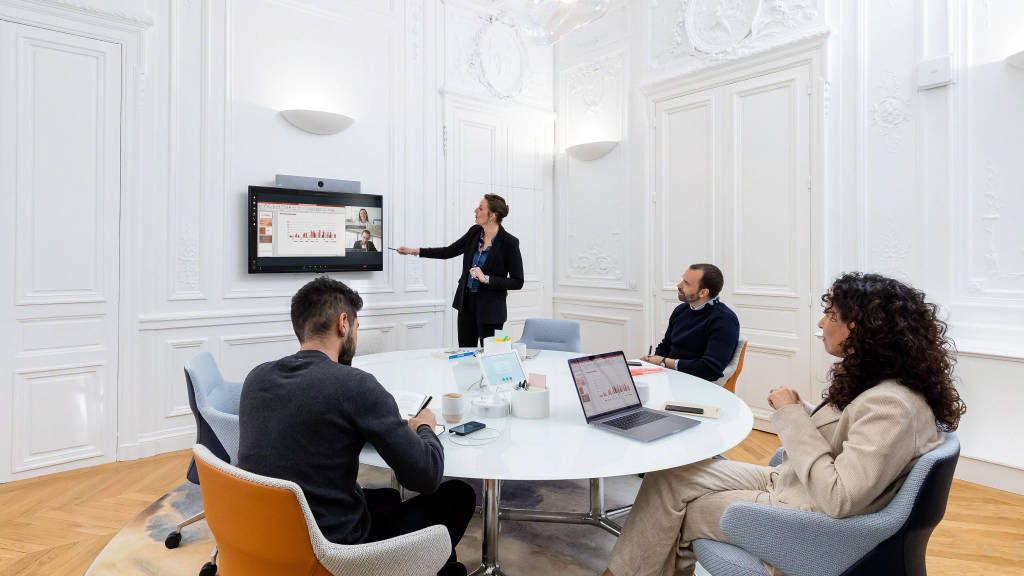
For Steelcase Paris, the opportunity to move came at the perfect time. A year and a half into the pandemic, social ties had been weakened by successive lockdowns and the obligation to work from home. A rise in hybrid work created new needs and the desire for change was stronger than ever.
BUILDING A HYBRID CULTURE
“Hybrid work created a need for a new environment that offered more flexible transitions between on-site and remote work, giving way to a range of technology-enabled spaces in every setting,” explains Guillaume Alvarez, senior vice president, Europe, Middle East & Africa.
The pandemic has called a lot into question and re-focused attention on the importance of meaning and fulfillment at work. As a result, cultivating employee pride and reinforcing a connection to the organization became essential by offering a workplace that met employee expectations.
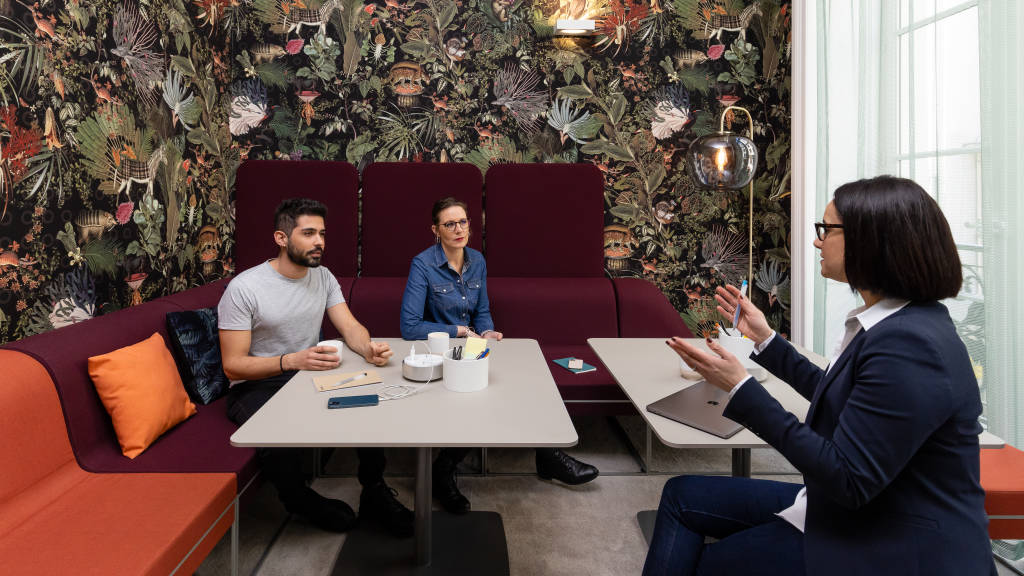
The choice of two large offices in a building at 3, square Edouard VII, in the ninth arrondissement of Paris, was deliberate: the 1,300 square-meter space, in a high-end office complex, is a prestigious location in a characteristically Parisian neighborhood. “The importance of the workplace should not be underestimated,” insists Mickaël Locoh, vice president of sales. “Kickstarting a new dynamic by offering a more attractive environment to our customers and staff is priceless.”
CHANGE MANAGEMENT
Employees were engaged in every stage of the process. Steelcase’s Applied Research + Consulting team, tasked with workplace transformation and workplace change management, consulted with employees and leaders to assess their state of mind and identify exactly what they needed and expected. The project team also hosted regular virtual employee meetings that added to discussions held with employee representatives.
“Change management did not end the day we moved into the new office,” says Chantal Gier, human resources director. “It’s a long-term process. Seeing how we live and work together in this new environment will allow us to make adjustments.”
A NEW HYBRID WORKPLACE
Choices in the design of the new WorkLife in Paris were based on Steelcase research into new ways of working and on things that employees need most. The global research found people are seeking a sense of belonging and more control over how and where they work. “The office is a melting pot of business culture – a place that builds connections between people,” points out Alvarez.
How people feel about their workplace makes a different to an organization’s success. In France, those that liked working in their office are more committed (+33%), more productive (13%) and more attuned to their company’s culture (+35%).
The latest Steelcase Global Report shares how work is fundamentally changing and why we need community at work.
DESIGNING FOR BELONGING
To encourage the serendipity and interaction that build a sense of belonging, the design team created ‘magnet’ spaces in strategic locations throughout the building that offer the equipment and services wanted by employees.
The WorkCafé is a perfect example of this strategy: This social setting, located at the entrance to the workspace, is a hub where employees interact all day. The café’s relaxed and friendly atmosphere is conducive to conversations at the coffee machine. Equipped with a large community table, lounge enclaves and pods, the space can also be used for pre-meeting tasks, a phone call, or a quick break.
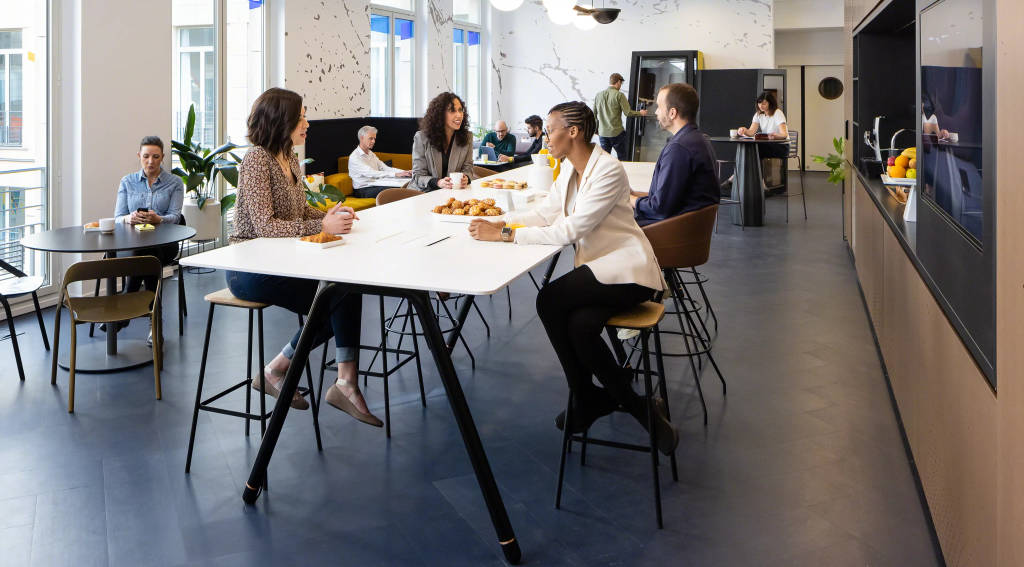
DESIGNING FOR CHOICE + CONTROL
A key objective of the project team was to offer employees more options by providing them with a diverse range of settings. Throughout the space, employees can choose to work in open or enclosed settings, that offer a range of postures. Desks are unassigned, so people can choose where to work according to what they’re doing. “No area is limited to one work mode or activity,” says Noga Lasser, design team director. “Each space is designed to offer different tools and levels of privacy, guided by a single keyword: flexibility.”
DESIGNING FOR PRODUCTIVITY
Hybrid work will require new investments in technology. The design team worked closely with IT to identify where and how to braid together technology and space in the new Paris WorkLife.
As a result, most of its workspaces support hybrid work. Video conferencing equipment was added to all meeting areas regardless of their layout to include remote participants. Hybrid collaboration is made easier with Cisco technology, which offers powerful sound, video and content-sharing features, even in small spaces.
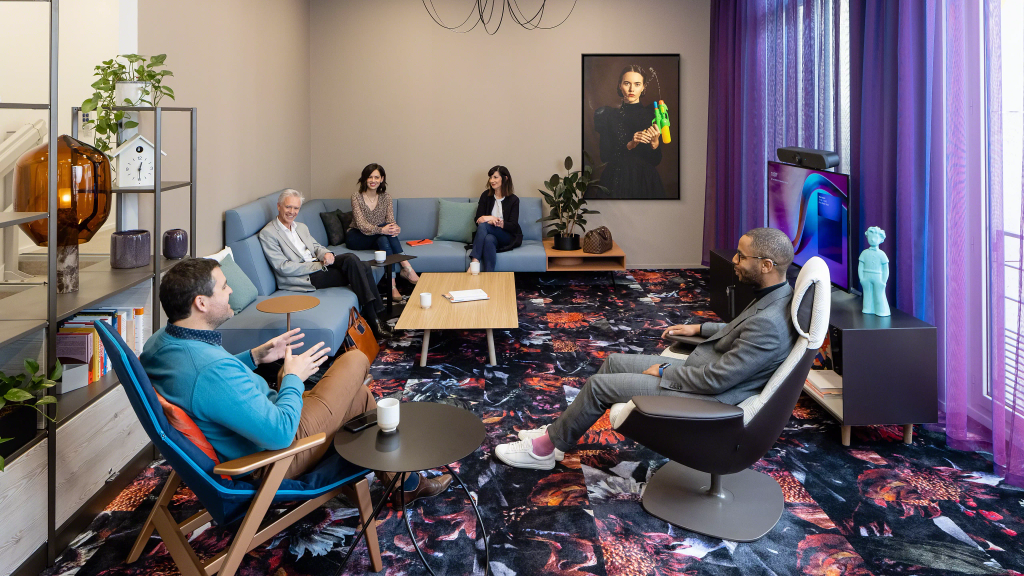
In the customer oasis, an informal welcome area adjacent to the reception desk, a large, connected screen is available to add one or several remote participants to a conversation. When customers visit, employees can ask a Steelcase expert at another site for help with a subject if needed.
Learning spaces were also designed to be more inclusive and offer an optimal hybrid experience. The IT team achieved this by installing two large Microsoft Surface Hub screens – one fixed to the wall and one mobile. These two different points of view offer excellent visibility and even the playing field between on-site and remote colleagues. A camera captures information written on whiteboards and projects it in the videoconferencing app, making remote participants feel as though they’re in the room.
To improve the overall hybrid experience, every desk is equipped with external as well as side-mounted acoustic panels to ensure neighbors aren’t disturbed by calls. Steelcase’s new Eclipse Light is a stand-alone tool that helps people look better while on video calls.
The project team also created an experimental area called the ‘digital gallery’ to fully explore the potential of hybrid work. Currently in development, this open space focuses on lighting, cameras, sound and content sharing to offer an optimal experience to both on-site and remote participants.
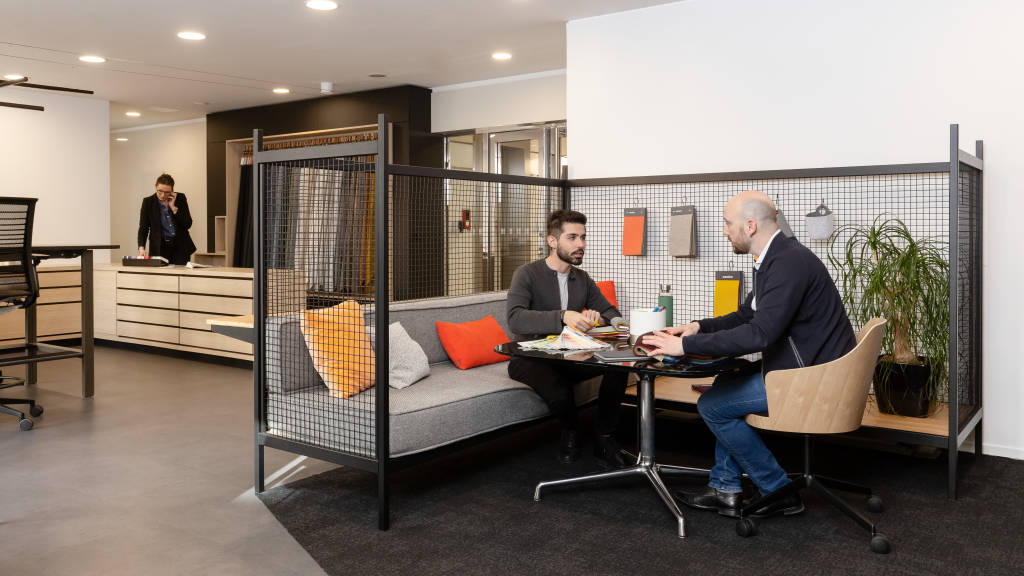
DESIGNING FOR WELLBEING
It’s well documented, people’s wellbeing was greatly impacted by the pandemic. When they return to their workplace, they’ll expect their wellbeing to be prioritized. Special attention was paid to comfort and ergonomics: 23 desks are height-adjustable; all the workspaces include high-performing chairs designed to encourage movement and active postures.
Wellbeing involves more than just physical comfort, however: cognitive needs are also key. Employees feel good in an open-plan office if they can access a private space to concentrate, make a call, or take a break away from noise and distractions. At the Paris WorkLife, this alone time is offered in a wide range of configurations throughout the building, from fully-equipped enclaves and phone pods to barriers and screens at desks.
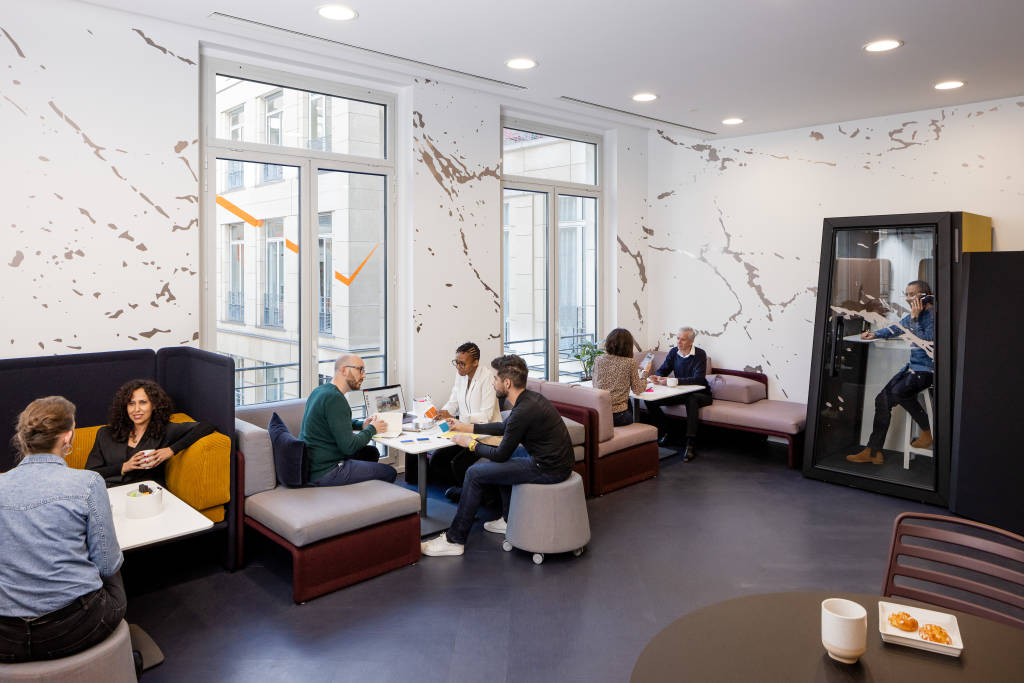
Emotional wellbeing plays a significant role in employee engagement and enhances a sense of belonging. The design team wanted to showcase a quintessentially-Parisian aesthetic and celebrate local culture. This is reflected in the configurations, architecture and choice of materials. The 19th century Haussmannian style in one section of the building and the use of colors and finishes – sourced from a rich local heritage – grant a bold identity to the space. Touches of greenery were added to furnishings and blend with the decor: more than just plants in the office, the aim is to generate the calm that comes from being close to nature.
The project’s goal to create a strong emotional connection to the space is especially evident in the reception area, which makes a memorable first impression. Visitors’ eyes fall first upon a Burin high table – a one-of-a-kind piece by Viccarbe specially created for the Paris WorkLife and matched with SILQ chairs. A unique and innovative solution Steelcase Flex Active Frames – surround the table and chairs, separating the reception area from the adjacent space and rising to the ceiling to mingle with an organic sculpture by Tzuri Gueta, a Paris-based designer who finds inspiration in the natural landscapes of his native Israel.
DESIGNING FOR FLEXIBILITY
To accommodate the need to continually evolve, the project team focused on the resilience of the space and the importance of flexibility for individuals and the organization.
“We are well-equipped to meet this need at Steelcase because flexibility is in our DNA. We create environments that flow, which is why we call them WorkLife spaces: They continually evolve in tandem with our needs, our research, and changes in the market,” indicates Lasser.

The team incorporated different degrees of flexibility. Certain areas, such as the agile studio and the active learning space, can be reconfigured daily. Others can be changed as teams’ needs change (the Steelcase Flex workspaces, for example, can be adjusted to different-sized teams) and features like the Campers&Dens pods from Orangebox can be moved after a year or two to accommodate bigger changes.
Modular furniture such as the Lagunitas lounge seating in the WorkCafé can easily be divided when social distancing is required.
“Only a few elements in the new Paris WorkLife are designed to be permanent,” says Lasser. “Everything else is completely versatile.”
DESIGNING FOR CIRCULARITY
In addition to meeting new employee needs and the challenges of the hybrid era, the Steelcase team was committed to making the circular economy a feature of the move. It did so by working with Eco’Services, a Steelcase business unit in Europe specializing in used furniture management, to dispatch items not transferred to the new site.
Little was left to waste: Eco’Services’ teams achieved a re-use rate of 91.3% and a recovery rate of over 87% from items sent for recycling. The initiative generated 7.1 tons in carbon dioxide savings for Steelcase.
The new Paris WorkLife is now a destination that engages and inspires employees and customers. A few weeks after the move, efforts seem to already be paying off: The number of employees at the office since the pandemic started has never been so high, and customer visits are back-to-back.
“We’re seeing a lot of enthusiasm for this new work environment and feel a new energy,” says Locoh. The center is a laboratory to test a wide range of tools and configurations. Consistent with its initial objective, the new Paris WorkLife provides a window on the future by offering a continually involving, inspiring and hybrid environment in which customers and employees can explore this new world of work.”
*Source : Steelcase Global Report


